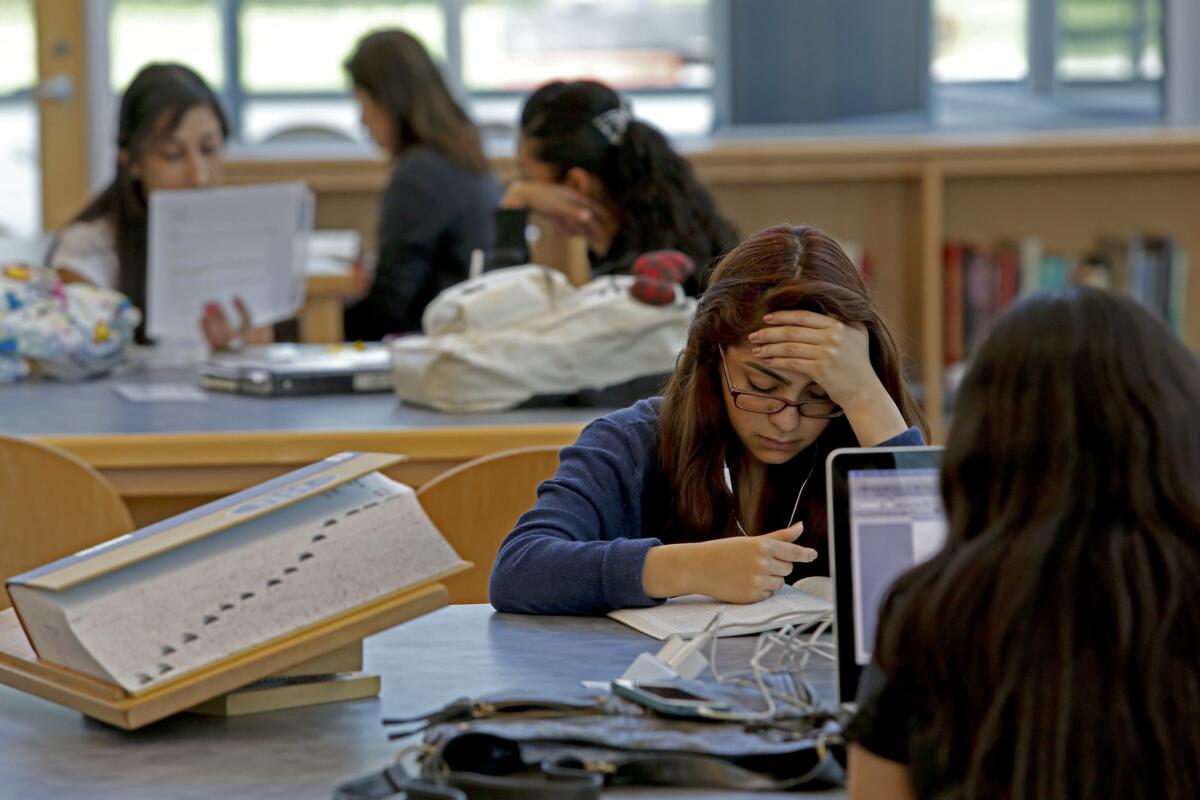A warning about trigger warnings

- Share via
In a front-page story in the New York Times on Sunday, Jennifer Medina reported on the phenomenon of “trigger warnings” -- “explicit alerts,” requested by students at universities across the country, “that the material they are about to read or see in a classroom might upset them or, as some students assert, cause symptoms of post-traumatic stress disorder in victims of rape or in war veterans.”
These universities include Rutgers, Oberlin, the University of Michigan and UC Santa Barbara, where, Medina reported, “the student government formally called for them.”
At issue here is the very real difference between trauma and discomfort, between what we cannot look at and what we do not want to see. Such a boundary seems particularly loaded in regard to literature. “Among the suggestions for books that would benefit from trigger warnings,” Median wrote, “are Shakespeare’s ‘The Merchant of Venice’ (contains anti-Semitism) and Virginia Woolf’s ‘Mrs. Dalloway’ (addresses suicide).”
How do we balance the values of open inquiry and free speech with need to be respectful of those (veterans, sexual-abuse survivors) for whom certain subjects, certain images, are not just provocative but dangerous?
When it comes to trigger warnings, I’d suggest, we need to be extremely careful not to allow good intentions to lead us into restrictions on the free flow of ideas.
Literature -- indeed, all art -- is supposed to push the boundaries; when it comes to many texts, movies and music, our discomfort is often the point. I think of James Baldwin and Toni Morrison, with their searing portrayals of racism, or the graphic and transformative accounts of gay life and sexuality in the work of John Rechy, Dennis Cooper and Radclyffe Hall.
What if students (for reasons religious or otherwise) found such books offensive? Should they be removed from the curriculum? Even more, what about the effect on the larger society, which in a fundamental way was changed for the better by the intercession of these writers, at least some of whom were not taught on college campuses until recently?
In her article, Medina quoted Greg Lukianoff of the Foundation for Individual Rights in Education: “Frankly it seems this is sort of an inevitable movement toward people increasingly expecting physical comfort and intellectual comfort in their lives. ... It is only going to get harder to teach people that there is a real important and serious value to being offended. Part of that is talking about deadly serious and uncomfortable subjects.”
Lukianoff is describing a culture of coddling, which many universities have become. That’s not the only story here, but it is a danger, this narrowing of the discourse to certain strict parameters.
As for me, I want my literature, my universities, to take risks, to dismantle the accepted, to challenge the status quo. I believe, as Kafka once wrote, that “[w]e should read only those books that bite and sting us.” I aspire to be offended and stirred up.
When literature and art are sanitized so they no longer push our buttons, they cease to be literature and art. This, I suppose, is its own form of trigger warning -- a reminder that freedom is provocative, dangerous even, precisely because it requires us to think for ourselves.
More to Read
Sign up for our Book Club newsletter
Get the latest news, events and more from the Los Angeles Times Book Club, and help us get L.A. reading and talking.
You may occasionally receive promotional content from the Los Angeles Times.








